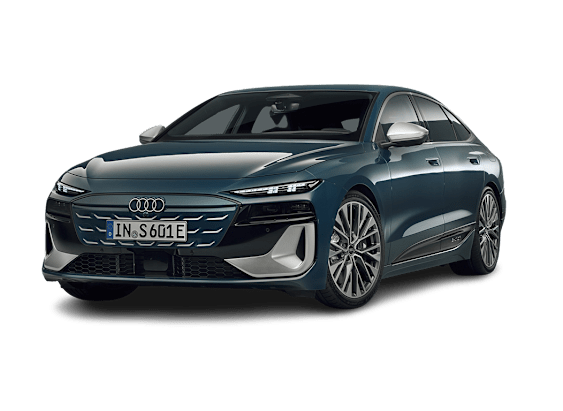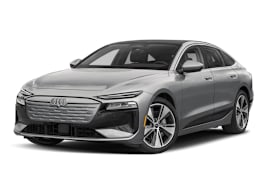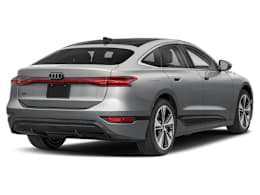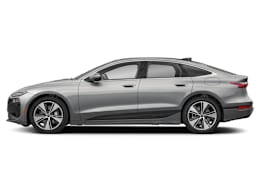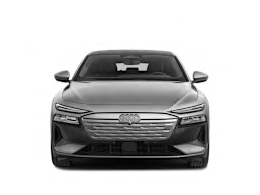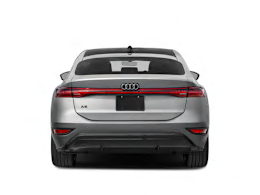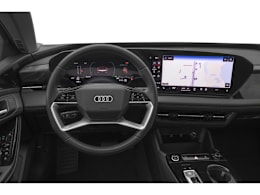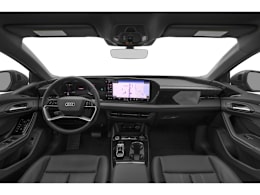Introduction
2025 Audi A6 E-Tron Wraps a Sleek Hatchback Body Around an Electric Powertrain
The newest Audi EV delivers more than 300 miles on a single charge, a quiet and well-appointed cabin, and a versatile interiorOverview
The 2025 Audi A6 Sportback E-Tron is the newest all-electric vehicle from the luxury German automaker. It is based on Audi’s updated Premium Platform Electric (PPE) platform, which the automaker shares with Porsche (both brands are owned by Volkswagen). In the case of the A6 E-Tron, that platform is wrapped in a sleek four-door bodystyle that has a sloping tailgate that opens like a hatchback.
Like the taller Q6 E-Tron SUV (read our road-test results), which also uses the PPE platform, the A6 E-Tron is part of the new generation of Audi electric vehicles, with longer driving ranges and faster charging than earlier models. Both are available with a single electric motor powering the rear wheels, or with two electric motors—one at each axle—giving the EV all-wheel drive. In addition, there is a high-performance S6 version that comes standard with all-wheel drive.
The rear-drive version uses a 375-hp single electric motor, while the all-wheel-drive A6 E-Tron Quattro has two electric motors that combine to produce 456 hp. S6 E-Trons utilize two electric motors to deliver 543 hp. All models use a 94.4-kilowatt-hour battery.
The EPA-estimated driving range for the RWD A6 E-Tron is 392 miles when fitted with the 19-inch wheel and tire package (20-inch wheels are standard), which helps to maximize range. All-wheel-drive versions like ours are rated at 333 miles, although Audi claims that versions with the smaller 19-inch wheels have a longer range. The performance-oriented S6 has a shorter range of 324 miles. All three are marked improvements over prior Audi EVs, and are among the longest-range EVs available today.
Like the Q6 E-Tron, the A6 E-Tron uses an 800-volt architecture enabling rapid battery replenishment at public DC fast chargers. With a maximum 270 kW fast-charging capability, it can potentially charge twice as fast as some competitors. The automaker claims that under optimal conditions, the battery can go from 10 percent to 80 percent in about 21 minutes of charging, which would put it among the fastest-charging EVs available.
While the interior design is restrained, it suffers from the same reliance on screens as most electric vehicles. The driver gets an 11.9-inch display, while the infotainment system is accessed via a center-mounted 14.5-inch touchscreen, with the right side curved toward the driver. Both screens are fitted behind a bezel that gives the appearance of one single unit. Only the top Prestige trim gets the 10.9-inch screen on the right side of the dashboard, which allows the front-seat passenger to stream video content, among other functions.
This is our initial assessment of the A6 E-Tron, which we anonymously purchased from a local dealership, and not our final review. We chose a Quattro Premium Plus because it is the trim level that Audi says most consumers will purchase. It includes features such as adaptive cruise control with assistance, which keeps the car centered in its lane and will slow the car to a stop and then accelerate in traffic, along with an augmented reality head-up display. The total cost came to $76,065.
It competes with the BMW i5, Genesis Electrified G80, Mercedes-Benz EQE, and Tesla Model S. Pricing ranges from $65,900 for the rear-wheel drive model all the way up to $84,600 for the S6.
The final assembly point is Ingostadt, Germany.
















